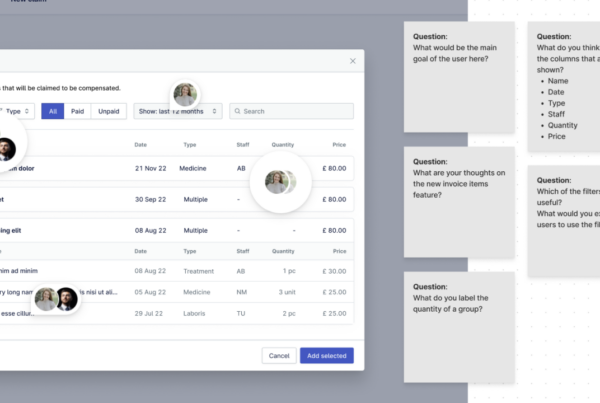As the world opens up, products are more and more designed for international audiences. While remote research helps with finding and understanding the real user, cultural influences impact our UX research. Even if your product is only used in one country, the users still have different cultural backgrounds. And they influence their expectations and behaviors with your product. And this has added a whole new and interesting layer to UX research.
What is culture?
The answer to this question will be different for everyone, as culture has many different explanations based on, you guessed it, culture. Some say culture is fixated in the country of origin or in the language spoken. But culture is so much more. In general, culture can be seen as the sum of the experiences of a person with regards to upbringing, social norms, traditions, habits, values, history, infrastructure, and beliefs. Because of the cultural influences, us UX researchers have an amazing opportunity to understand the cultural influences of our users when it comes to product design.
Cultural models in UX research
Countless cultural models have been developed. I will mention a few that I have found useful in my work as a UX researcher, but none of these is the one and only holy grail to understanding cultural influences. The holy grail is that you must develop yourself as a UX researcher to be an unbiased, open-minded individual that reflects and learns from others about their culture. A good method to use here is ethnography.
Hofstede on culture
According to Hofstede, the way people are programmed influences the way they think and reflect. This is seen in how people form attachments to various aspects of life and how they are a part of society.
Culture is defined as the collective mental programming of the human mind which distinguishes one group of people from another.
Geert Hofstede
A sidenote by Hofstede is that even though people might live in the same country, it does not mean that they are programmed the same way. Each individual (each user) is different. However, as Hofstede’s cultural model implies, it is possible to use the sum of the bigger group to gain an understanding of a culture within our UX research.


Hofstede has based his cultural model on 6 dimensions; power distance, individualism, masculinity, uncertainty avoidance, long term orientation, and indulgence and based on research of Michael Minkov (Cultures and Organizations, Software of the Mind (2010), pages 255-258.) has defined the scores.
Keep in mind that these numbers are not an exact depiction of a culture. In the Netherlands between 39,000 and 75,000 are expats according to CBS. And 21,4% of the Dutch population is of foreign origin. With 10,8% being classed as first generation, and 10,6 per cent as second generation immigrants. These expats or different generations of cultures will have had different experiences that influence their culture. Parts of it may be fitting with the numbers of the Netherlands and others won’t.
If you use Hofstede as an entryway into UX research then this can be a good method. This cultural model helps to define interview questions for your target audience, but that interview is still needed to understand your user’s culture.
Hall’s Cultural factors
Another cultural model was designed by Edward T. Hall, who was also an anthropologist. The focus of Hall’s cultural factors is on the context of communication, ie. how people communicate with one another.
Again, this is an interesting method to use in UX research to define the cultural influences of your user. Between cultures there are different types of communication. There are cultures that are high-context and low-context in their communication. In a high-context culture, there are many contextual elements that help people to understand the rules of communication. In a low-context culture very little is taken for granted. This means more explanation is needed, which means there is often less chance of misunderstanding.

The downfall here is that there can be communication barriers between a high-context culture and a low-context culture. In business you see french contracts being short in length as they are a high context culture. American contracts are long as they are low-context and will explain all details necessary.
When creating products this is an interesting aspect to research as the cultural influences here could define how easy it is for people to use your product. When you are designing a product for people with low-context communication you’d want to give them more context to fully understand what the product does for them and vice versa.
The values Orientation Theory by Kluckhohn & Strodbeck
This model by Kluckhohn & Strodbeck (anthropologists) states that the attitudes of people are based on the relatively stable values they hold. It is a model based on a set of universal problems that people must answer to identify their values. These questions are based on a person’s relationship with time, nature, each other, basic human motivations, and the nature of human nature.

As with Hofstede, Kluckhohns & Strodbecks model is also not the holy grail of UX Research. It can however give you insights into the norms and values of your target audience. This can be done through an interview, by asking: “how do you feel people should interact with each other?” Now, this model doesn’t directly give you answers to what people need from your product, but it can give you insights into their values and behaviors. This data can be used when designing a product.
How to apply cultural UX research to your product design?
In UX research it is important to understand our users, and cultural UX research is a big part of that. This research can be converted into persona’s or empathy maps to visualize the users of your product. But applying the found data on your user is a different matter. For this, we look at the three levels of culturalisation.
The three levels of Culturalisation by Chui Chui Tan
This method by Chui Chui Tan focuses more on product development based on cultural research. It states that the focus is on understanding the market and its audience as a whole to use cultural insights and thus can be interesting to structure your UX research around.

The fundamentals: the parts of a culture that is so deeply grounded in their values and beliefs that making a mistake here will cost you your users. For example: when FallOut3 came out in India, the company faced major backlash because of featuring a mutated two-headed cow. In India, cows are seen as sacred animals and this design choice was a huge insult to their culture.
The basic: the elements that are the bare minimum that companies need to change. Think about currencies, formatting of names or dates, and translation. For example: Think about dialect, slang, and the meaning of words and phrases. Though Mexico and Spain both speak Spanish as their native language, not everything translates the same.
The detail: the small details that make a company stand out and bring brands or products to a different level. Although a product might work without attention to cultural details, these details will help in improving conversion rates, retention rates, and future growth possibilities. For example, the menu of MC Donalds has feature dishes depending on the cultural preferences of the country.Croatia serves Tzatziki wraps, Italy has mozzarella burgers and in Spain, you can order gazpacho with your meal. These are the details that set a company apart based on the cultural influences found through UX Research.

Conclusion
While there is no holy grail that suddenly gives you all the answers about your user, UX research can benefit from cultural research. Your user’s values, beliefs, ways of communication can give you input for your product design.
Keep in mind that these are a few cultural models that you can use to help you set up your UX research. It gives input for interviews or a model to understand your collected data. Using the data from your research requires a different approach (such as the three levels of culturalisation). But in doing so better your product and so your companies market value.




